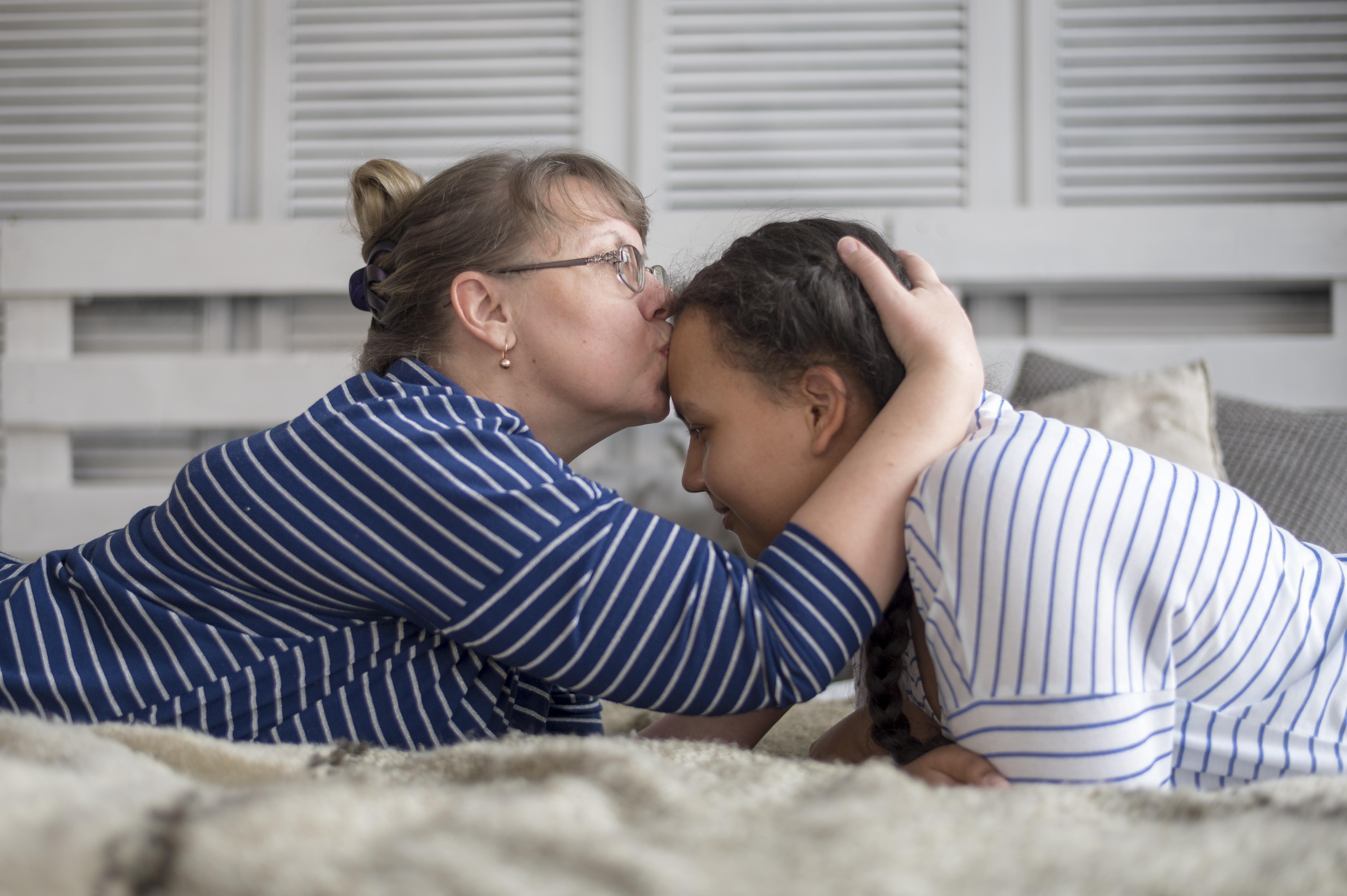Feminised composure, coercive calm, and the disciplining of mothers and children in public education.
The impossible standard: Feminised calm as moral authority
There is a particular way one is expected to enter the room when a child has been harmed, a way that soothes the adults on the other side of the table, a way that signals one’s own composure more clearly than one’s child’s distress. This manner of entry is light-footed, soft-voiced, unthreatening in tone and affect. It is polite without being passive, firm without being sharp, clear but never critical. It allows the listener to avoid the weight of another person’s grief, avoids activating discomfort or urgency, and ensures that harm can be acknowledged without ever being felt.
This mode of presence, admired and enforced in countless institutions, is a feminised and racialised performance of grace, and it functions precisely to maintain existing power. It demands that women—especially mothers—speak only from a place of emotional containment, and that their authority derives from their ability to transcend their own suffering in order to soothe the system that caused it.
To perform this version of “reasonable” motherhood is to continuously suppress the body’s rightful reactions. You must not cry too much. You must never raise your voice. You must not tremble, shake, or—god forbid—seethe. You must hold the room together with your tone, not pull it apart with your truth. And yet, the truth is what you carry: the sleepless nights, the blood sugar crashes, the doctor’s notes that were ignored, the child who stopped singing. You carry the fragments of a once-trusting child and the growing shape of their terror.
You are here to speak for what they need, and in doing so, you are already at risk of being called disruptive. Mothers who weep are fragile. Mothers who raise their voices are unhinged. Mothers who walk out are irrational. Only those who can stay poised, who can package trauma into a pleasant agenda item, are given any legitimacy. And so, poise becomes a test of moral authority—one that punishes the very people who have borne the most.
Performative grace as institutional shield
I have sat through meetings where my own children’s pain was discussed with the tone one might use to plan a seating chart, where people said “we’re doing our best” as though best efforts should satisfy a child’s basic human rights. I have sat through those meetings with a steady face, a colour-coded binder, and printed agendas.
And I have sat through others where I said, plainly, “This is hurting them,” and watched the room recoil—not from the content of my words, but from the feeling they carried. When a mother breaks the spell of pleasantness, she becomes a problem to manage. Her emotion is read as aggression, her tone as threat. In these moments, professionals often cling to process rather than responsibility. They talk about policies, not power. They praise her strength when she is silent and remove her credibility when she is visible in her rage.
The demand for grace becomes a shield for those inside the system—especially in education, where harm is frequently distributed across roles and bureaucracies. It allows staff to avoid the emotional consequences of decisions they have made. When a child is excluded, restrained, or repeatedly denied accommodation, the family is expected to remain composed in the face of administrative failure. Any visible distress is pathologised.
And this expectation is especially gendered: fathers may be firm or direct and retain credibility; mothers must walk a line so thin it severs them. They must be passionate but professional, worried but not panicked, precise but deferential. The line tightens around them the moment they speak clearly.
Composure becomes the currency required for entry, and those who cannot pay it—due to disability, trauma, language barriers, cultural difference, or moral urgency—are either dismissed or disciplined. The grace demanded is not healing; it is institutional armour. And it protects the wrong people.
Masking, misreading, and the punishment of distress in girls
My daughter learned early how to hide. She learned that her feelings made other people uncomfortable, that when she was visibly upset, the adults around her froze or turned away. When she was quiet and helpful, when she said she was fine, she was praised. When she was overwhelmed, overstimulated, confused, or grieving, and tried to express this, she was either ignored or misunderstood.
At school, the girls who were noticed were the ones who acted out—because staff recognised acting out as a need. But the ones who folded inward, who tried to hold the classroom together with their kindness, were considered stable, successful, and easy to serve. My daughter was one of those girls. And it nearly broke her.
The school support team, composed almost entirely of women, spoke admiringly of her maturity. They saw her willingness to help a dysregulated peer as a sign of social skill. They interpreted her withdrawal as resilience. They described her as “able to hold it together.” And when I told them she came home and collapsed—crying, shaking, questioning her worth—they seemed surprised. It did not match the child they saw.
Because the child they saw was performing grace. She was enacting the very same poise that I was. She was learning from me how to stay safe in an institution that punished distress. And I was modelling something I wished neither of us had to learn.
The same logic that disciplines mothers also disciplines girls. It rewards them for masking and punishes them for needing help. It frames their calm as a sign of ability, rather than a coping strategy under duress. And in doing so, it obscures the real story: that their needs have been denied, their safety compromised, their voice unheard. Girls who mask well are told they are thriving. Girls who name harm are told to calm down. And over time, they learn to disappear in plain sight.
-
Justice and dignity too expensive for BC NDP
In 2018, experts told BC exactly how to fix special education funding. The government has spent five years “consulting” instead. Meanwhile, your child sits in hallways. The 192% problem nobody wants to fund Between 2015 and 2024, autism designations in BC schools exploded…
-
When delay becomes policy: British Columbia’s strategic abandonment of disabled students
In 2018, an independent panel reviewed how British Columbia funds kindergarten through grade twelve education and recommended a prevalence model for special education funding, a shift that would allocate resources based on statistical prevalence of disability within the general student population rather than on individual…
Rage and rupture as feminist knowledge practices
To feel rage when your child is harmed is not a failure of regulation; it is a sign of attachment. To speak from that rage is not a breakdown; it is a form of feminist truth-telling. And yet, public institutions treat maternal anger as contamination—as something to be neutralised, redirected, or ignored. Rage is cast as unprofessional, inconvenient, and dangerous.
But feminist disability theory invites us to view rage as data. It tells us that emotions carry information, that the affective labour of surviving these systems produces knowledge about what is broken and what must change. Rage is also connection. It emerges when the care you carry for another person collides with the structural violence that renders them expendable.
When I speak from rage, I am speaking from that collision. I am naming the violence. I am refusing the script. And in doing so, I am modelling to my children that survival is not silence, and that love can be fierce, ungraceful, and wholly legitimate.
Rage ruptures the performance of poise—but in doing so, it makes visible the stakes. It says: this matters. It says: this hurts. It says: you can no longer pretend otherwise.
Toward institutional ethics rooted in truth, not serenity
If public schools truly wish to honour the dignity of families, they must stop rewarding composure and start listening to what it costs. They must build systems that do not require mothers to show up serene in the face of their children’s suffering.
They must recognise that distress—whether from a parent, a child, or a teacher—is not a behaviour to be managed but a signal to be understood. That signal should prompt reflection, not discipline. And support teams should be trained to interpret visible emotion as an invitation to care more deeply, not a threat to their authority.
Repairing harm requires emotional fluency, not affective distance. It requires the ability to stay with grief, to tolerate rage, and to act on the truths they carry. This is especially true for girls and gender-expansive children, who are still so often taught to perform care at their own expense, to remain calm while others erupt, and to protect adults from the consequences of their own inaction.
It is true for disabled families, whose distress is too often misread as dysfunction, whose truths are too often lost in translation, and whose needs are too often treated as unreasonable when delivered with urgency.
If we want schools that are safe and humane, we must stop expecting mothers and children to do the work of keeping things calm. We must create conditions where truth is welcome, even when it hurts to hear. And we must name poise for what it has become in these institutions: not a sign of virtue, but a shield against accountability.
-
Few of us remain our best selves in a room starved of air
If you are a parent of a neurodivergent child, you can recite the script before the phone even buzzes. “[Child] had a very good day and really showed leadership with the younger kids” Pause. “But in the afternoon [Child] had some unexpected behaviour. [Child] is…
-
You’re not wrong: reflections on motherhood and advocacy
This piece is for the mothers who have become unrecognisable to themselves in the crucible of advocacy—those who perform calm while their bodies tremble with rage, who write polite emails through tears, who scream in the car and smile in the meeting. It…
-
The politics of politeness: how tone-policing silences parent advocates
When a parent dares to speak plainly about harm—especially when that harm is systemic, ongoing, and inflicted upon a disabled child—they are swiftly met with a familiar response: watch your tone.










